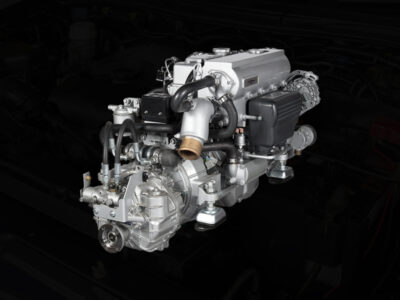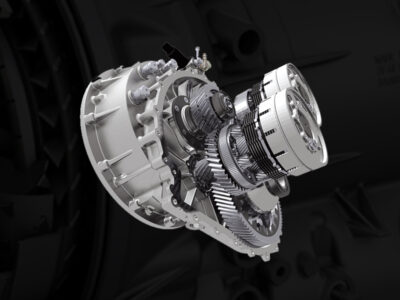
Purchasing a used transmission can be a cost-effective solution for vehicle repair or restoration. However, selecting the right transmission requires careful attention to detail to ensure reliability, compatibility, and value for money. Below, we outline the essential factors to consider when buying a used transmission to help you make an informed decision.
Key Factors to Know When Buying a Used Transmission
1. Identify the Correct Transmission Type
Ensuring compatibility with your vehicle is critical. Consult your vehicle’s owner manual or a trusted mechanic to determine the exact specifications, including:
- Transmission type: Manual or automatic.
- Model compatibility: Verify the model year and trim level to avoid mismatches.
- OEM part numbers: Match the Original Equipment Manufacturer (OEM) codes for precision.
Using a VIN decoder can also provide detailed information about your car’s transmission type and other vital specifications.
2. Inspect the Transmission’s History
A used transmission’s history reveals much about its condition and performance. Request the following details:
- Mileage: Opt for a unit with lower mileage to maximize longevity.
- Source: Confirm whether it was salvaged from a running vehicle or involved in a collision.
- Maintenance records: Look for evidence of regular fluid changes and upkeep.
Avoid transmissions from vehicles with unresolved mechanical issues or poor maintenance histories.
3. Conduct a Thorough Visual Inspection
A physical inspection of the used transmission can uncover signs of wear or damage. Pay attention to:
- Leaks: Check for oil or transmission fluid leaks around the housing and seals.
- Corrosion: Avoid units with significant rust or corrosion, as these can compromise durability.
- Cracks or dents: Inspect the casing for structural damage.
Ask the seller to allow you to check the pan gasket, torque converter, and input/output shafts for additional signs of wear.
4. Verify Fluid Condition
The condition of the transmission fluid is a reliable indicator of the unit’s health. Examine the fluid for:
- Color: Red or pink is usually the color of healthy transmission fluid. Dark or burnt fluid signals excessive wear.
- Odor: A burnt smell may indicate overheating or internal damage.
- Debris: Look for metal shavings or particles, which suggest internal component failure.
If possible, request to see the fluid during an inspection to confirm its quality.
5. Ensure Proper Testing
Testing the used transmission before purchase provides critical insights into its functionality. Seek out sellers who offer:
- Bench tests: Verify gear engagement, shifting performance, and overall functionality.
- Road tests: For salvaged units, confirm smooth operation under load.
These tests help identify issues that may not be visible during a visual inspection.
Also read: Where to Find the Best Used Truck Parts for Your Vehicle?
6. Assess Warranty Options
A warranty adds peace of mind and protects your investment. Key points to evaluate include:
- Coverage duration: Opt for warranties that extend beyond 30 days to allow sufficient testing time.
- Scope: Ensure the warranty covers defects, operational failures, and improper function.
- Conditions: Review the terms for coverage exclusions, such as improper installation.
Choose reputable sellers or auto recyclers that offer robust warranty policies on used transmissions.
7. Verify the Seller’s Reputation
A trusted seller is essential when buying a used transmission. Research the seller’s background by:
- Reading reviews: Check online platforms for customer feedback and ratings.
- Asking for references: Reliable sellers are often willing to provide references from satisfied customers.
- Confirming certifications: Look for businesses certified by associations such as the Automotive Recyclers Association (ARA).
Avoid sellers with inconsistent or unverified histories.
8. Compare Costs
The price of a used transmission can vary significantly. To ensure value for money:
- Request quotes: Compare prices from multiple sellers to find the most competitive rate.
- Factor in additional costs: Consider shipping fees, installation charges, and potential repairs.
- Avoid excessively low prices: Unrealistically cheap units may indicate hidden issues or inferior quality.
Investing in a well-maintained used transmission typically saves money over time compared to purchasing a cheaper but unreliable unit.
9. Check for Additional Components
Some used transmissions come with accompanying components. Ensure the package includes critical parts such as:
- Torque converter: For automatic transmissions, confirm the torque converter is included and in good condition.
- Mounting brackets: Verify that mounting hardware matches your vehicle’s setup.
- Sensors and wiring: Check for compatible sensors or wiring harnesses as needed.
Acquiring these components separately can add to the overall cost and complexity of installation.
10. Seek Professional Installation
Proper installation ensures the optimal performance of your used transmission. Work with a certified mechanic to:
- Inspect the unit: Verify the transmission’s condition before installation.
- Replace seals and filters: Refresh seals, gaskets, and filters to enhance reliability.
- Use the correct fluids: Follow the manufacturer’s recommendations for transmission fluid.
Professional installation minimizes the risk of operational issues and enhances the lifespan of the transmission.
11. Consider the Transmission’s Age
Age impacts a transmission’s wear and overall lifespan. When assessing a used transmission:
- Match the vehicle’s age: Choose a unit from a vehicle of similar age or newer.
- Check for upgrades: Look for transmissions that have been refurbished or improved.
- Avoid obsolete models: Ensure the transmission supports modern technology and components.
Balancing age with compatibility and performance is key to a successful purchase.
12. Understand Return Policies
Read the seller’s return policy before finalizing your purchase. Ensure you can return or exchange the transmission if:
- It is incompatible: Despite your best efforts, mismatches can occur.
- It fails prematurely: Protect yourself against unforeseen defects.
Choose sellers with flexible and customer-friendly return policies to reduce risks.
Conclusion
Purchasing a used transmission demands thorough research and careful evaluation. By following these guidelines, you can secure a reliable and cost-effective transmission that meets your vehicle’s needs. Focus on compatibility, condition, and seller credibility to ensure long-term satisfaction. Remember, investing time upfront can save you from expensive repairs and replacements down the road.
A111 Auto Parts specializes in providing top-quality used transmissions with extended warranties, ensuring reliability and performance for your vehicle. With easy online ordering and free nationwide delivery, finding the perfect fit for your car has never been simpler. Get in touch with our transmission experts today at +1(888) 944-0111 for personalized assistance.





